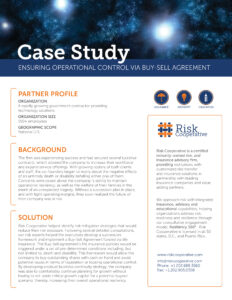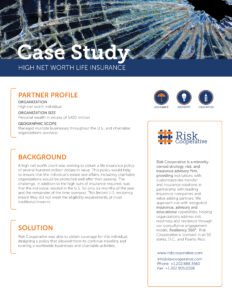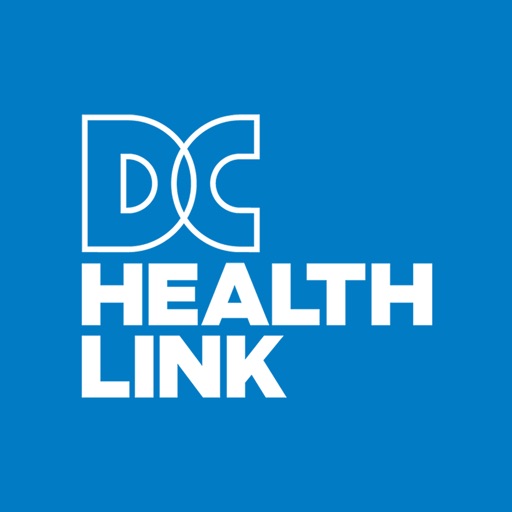Insurance Solutions
Life and Health
Risk Cooperative understands that a key coverage component for any business involves life and health insurance programs. Our team has deep knowledge in these coverage areas, helping organizations to safeguard their employees anywhere in the world.
Risk Cooperative provides a wide range of insurance programs for accident and health insurance, designed with each customer in mind, helping to meet their needs on a regional or global level.
Key Coverages:
Life
Group life insurance programs are available worldwide, including comprehensive coverage against broad risks and high-value plans.
- Term Life Insurance
- Key Person coverage
Health
Major medical, travel medical and globally portable programs are available worldwide.
- Business travel accident
- Major medical health insurance
- Travel medical
Accident and Disability
Travel accident, disability and related programs are available worldwide.
- Accidental death and dismemberment
Income Protection
Income protection coverage, including coverage against broad perils across multiple locations or worldwide.
- Long term disability
- Short term disability
- Dread disease/critical illness
Tailored Programs
Custom tailored solutions or product bundles is a part of our brokerage process.
Resource Library
The hospital industry faced a massive financial crisis in 2020 caused by the COVID-19 pandemic, as systems struggled with low patient volumes and massive hits to financial resources and liquidity. The pandemic will likely continue to have a substantial impact on the hospital industry throughout 2021, from increased hospital consolidation to a volatile payer mix and a surge in telehealth.
Mergers Likely to Increase for the Greater Good
Healthcare experienced a significant movement toward hospital consolidation prior to the pandemic, and this trend is likely to continue as some smaller, independent hospitals face revenue deficits caused by dwindling patient volumes. According to an outlook report from the credit rating agency Fitch Ratings, smaller providers may be forced to align with larger providers as the pandemic begins to fade.
Mergers have the potential to increase in 2021 as health systems pivot toward more virtual care. Reports from consulting firms Kaufmann Hall and Deloitte suggested health systems should transform their business model from a revenue-focused hospital care toward a “broader portfolio of nonpatient care delivery.” The year-end analysis within the reports uncovered 79 healthcare merger and acquisitions announcements in 2020, including a deal between Intermountain Healthcare and Sanford Health. The Utah-based organizations revealed in an October press release that their partnership will focus on bringing more affordable and accessible healthcare to communities through coordinated care and increased use of telehealth and digital health services. The proposed merger has been placed on hold due to a change in Sanford Health’s leadership, but the health systems may revisit discussions in 2021 as Sanford Health continues to evaluate its organizational needs.
Last October, Atrium Health and Wake Forest Baptist Health finalized an $11 billion merger to create a next-generation academic health system. Wake Forest Baptist Health and Wake Forest School of Medicine will be the academic core of the merger, with a focus on expanding its school of medicine to create one of the largest educators of physicians and other medical professionals in North Carolina. The new health system also intends to advance its behavioral health capabilities via telemedicine, improve large, patient-centered research aimed at Alzheimer’s disease, and expand its provider care as the largest provider for Medicaid recipients across North Carolina.
The need for hospital and health systems to focus on core business strengths and bolster intellectual capacity will only grow in 2021 as vaccinations are still in the process of distribution throughout the US. From improving relationships between payers and providers to research partnerships between academic medical institutions and pharmaceutical companies, look for an increase in collaborations between non-traditional partners that are forged to address gaps in the infrastructure exposed by the COVID-19 virus.
A Fickle Payer Mix Could Wreak Financial Havoc on Hospitals
A significant derivative of the pandemic has been job losses across the economy, which could lead to major changes to the payer mix for some hospitals in 2021. Elevated unemployment in 2020 and a slow recovery may lead to a rise in Medicaid and uninsured patients as individuals lose employer-sponsored commercial insurance, which is typically more profitable for hospitals than government health plans due to their larger reimbursement rates.
The credit ratings agency Moody’s released a report that discovered commercial insurance participation declined by 1% in the third quarter of 2020 compared to 2019. The report also revealed Medicaid enrollment skyrocketed throughout the 2020 pandemic, with Medicaid enrollment increasing by nearly 8.5% between February and September of last year. As furloughs potentially turn into layoffs, the rise in Medicaid and self-pay insurance could increase the rate of changes in payer mix for hospitals in 2021 and jeopardize the revenue stability of the healthcare industry.
The upsurge in government health plan enrollment in the past year can also be attributed to the telehealth boom within the healthcare industry. The Centers for Medicare and Medicaid Services (CMS) expanded its Medicare and Medicaid coverage guidelines in 2020 to make health care more accessible and allow for more patient flexibility through telehealth services. According to the Department of Health and Human Services, nearly half of Medicare primary care visits were via telehealth in April of last year.
As Telehealth Soars, So Does the Potential for Cyber Threats
Buoyed by the COVID-19 pandemic, telehealth was at the forefront of health care in 2020, from providing clinical support for physical and mental health issues to supplying medical care to rural communities with limited medical facility access. As many hospitals and physician offices continue to pivot toward telehealth for clinical visits, insurers are also modifying their reimbursement policies in favor of telehealth. As of January 2021, insurance juggernauts United Healthcare and Cigna revised their telehealth reimbursement policies to broaden their commercial plan virtual services, create a more interactive patient experience, and align with CMS telehealth services and guidelines. Despite the overwhelmingly positive impact of telehealth in the past year, the increased utilization and reliance on shared technology provides new entry points for hackers to access and exploit valuable information.
Universal Health Services, one of the largest health systems in the US, was subject to a ransomware attack last October that affected all of its domestic care sites and hospitals. The Wall Street Journal reported that the attack resulted in rerouting of ambulances, delays in patient treatments, and temporary as well as, in some cases, permanent loss of medical records. In the same month, University of Vermont Health Network also fell victim to a ransomware strike. According to the Burlington Free Press, the organization’s patient portal was inaccessible for weeks and cost the health system approximately $1.5 million each day in increased expenses and lost revenue.
It is important to recognize that these cyber threats do not only pertain to organizations within the healthcare industry. Companies in all market segments need to look internally and assess the nature of their security infrastructure, including how data is encrypted and who can access sensitive data. Communicating the importance of cyber hygiene to telecommuting staff should remain a top priority, and it is imperative for companies across all industries to act as risk managers and adopt a proactive approach to cybersecurity. Proper levels of investment in people, processes, and information technology will result in resiliency from an array of potential threats, and more importantly, a future pandemic.
With the present COVID-19 pandemic, many organizations have moved to teleworking environments for the health and safety of their employees. This instant changeover coupled with widespread uncertainty and strict government guidelines affecting daily life has created a space where new or existing mental health issues, such as anxiety and depression, are amplified for many employees. […]
With the present COVID-19 pandemic, many organizations have moved to teleworking environments for the health and safety of their employees. This instant changeover coupled with widespread uncertainty and strict government guidelines affecting daily life has created a space where new or existing mental health issues, such as anxiety and depression, are amplified for many employees. As a result, a growing number of Americans – as many as 41%, according to the CDC – are experiencing mental or behavioral health challenges as they adjust to their new remote working arrangements. With nearly 80% of CEOs reporting that telework is here to stay, employers need to invest in the wellbeing of their remote workforce.
What Employers Can Do
Considering the pressing nature of mental health during a global health crisis, employers are focusing efforts on sourcing and integrating supportive services that best assist employees in managing their day-to-day stressors. One popular option is the utilization of an Employee Assistance Program (EAP). These benefits provide intermediary support between employers and employees, to support employee’s work performance and ability to manage stress and illness.
Employee Assistance Programs (EAPs) are additional benefits oftentimes provided through group insurance plans, but also as standalone programs, that offer employees no-cost access to a range of support and referral services. These options are generally administered in tandem with specialty benefits firms that provide extensive direct or referral services, including:
Wellness Support | Experts assist employees with mental, behavioral, or physical issues through counseling services. This offering can extend beyond the individual employee to their immediate family members (e.g., spouse, children, parents) including items such as family and adolescent treatment referrals or direct therapy services. This EAP benefit can be particularly helpful for employees who are working from home with children or other family members that require constant care. Locating open local daycares, nursing, or home health services are just a few items that can provide some relief of these responsibilities.
Financial Consultations | Professionals guide employees with managing their budgets and growing their savings through investment strategies, retirement planning and referrals to qualified local financial advisors. The US Census’ Household Pulse Survey, conducted from May – July 2020, indicated an increase of anxiety and depression in many American respondents due to layoffs, reduction in work and lower income circumstances, subsequently leading to financial hardship. Utilizing an EAP for assistance in this area can significantly reduce the associated pressure and deterioration of employee motivation and well-being during this unprecedented time.
Legal Services | Employees can receive little- to no-cost legal support including will creation, estate planning, document review, consultations, and discounts on advisor fees. During a time where some individuals may experience housing changes, from eviction to relocation, EAPs can help with the burden of deciphering leasing documents or navigating real estate sales or mortgage documents.
Identity Theft | Provides support to employees and their immediate family members who are victims of identity theft. EAP services can connect employees with specialists who can provide guidance on preventative steps employees can take to secure their private information. In the event of theft, trained specialists can assist employees through the recuperation process including disputes with credit agencies or finding resources to cover identity theft expenses.
Work Issues | Employees suffering with job-related stress can seek assistance through an EAP program which can provide intermediary and consultative support between the employee and their employers.
Other Personal Matters | EAPs can offer employees the resources to manage their overall health including nutrition and fitness management, in addition to assistance with items such as education, pet care coordination and even recourse for substance abuse issues.
EAPs offer access to various resources, not limited to those mentioned above, that can provide substantial assistance to employees in effectively managing their overall well-being through supportive individual, family, or job-related services to best foster work-life balance.
Utilizing an EAP benefit is an integral component of a comprehensive benefits package. With the recent conclusion of September’s Suicide Prevention Month followed by World Mental Health Day on October 10, there is no better time to evaluate additional resources to support employees through this turbulent time.
YOU MIGHT ALSO BE INTERESTED IN:
Employee Benefits: The New Form of Recruitment and Retention
How to Choose Your Broker
Healthcare in the U.S. remains a complex and costly item for all companies. From shifting regulations, to cumbersome enrollment requirements, and sometimes ambiguous claims process, organizations of all sizes struggle with how to get the most out of their coverage.
Rising healthcare costs for both employers and employees further drives the need to extract more value when it comes to selecting health insurance. According to a recent Kaiser Family Foundation employee health benefits survey, the annual cost of family health coverage in the U.S. for employers hit the $20,000 mark for the first time. However, costs are not rising for employers alone. The average employee contributes a little over $6,000 toward the family cost of coverage, another record for employee contributions.
For many employers and employees, the prospect of spending more while receiving less coverage has become a painful tradeoff. This cost increase, coupled with a recent Gallup survey stating a record 25% of Americans delayed medical care for a serious ailment in the past year due to cost, is not just impacting balance sheets, it is putting many lives at risk.
The healthcare market is not poised to resolve these issues in the near term. Given this new operating reality, it is imperative for employers to leverage all available resources that can assist employees with their healthcare management and facilitate claims payments. One such resource, which is often underutilized, is a patient advocate service.
Health Advocacy Services Helps Both Employers and Employees
Healthcare advocate services provide trained professionals who can ask questions, write down information, and speak up for covered employees so they can better understand medical issues, navigate claims filings, and help interpret insurance policy coverage. They augment the work of your insurance broker and HR team, to ensure employees receive needed care and best outcomes when working with insurance companies.
Risk Cooperative recommends employers utilize a hired professional health advocate to act in a third-party capacity to assist employees with healthcare needs. Not only does this protect the privacy of workers and adhere to Health Insurance Portability and Accountability Act (HIPAA) regulation laws regarding health inquiries, it also does the following:
A health advocacy service allows the employer to remove itself from the daily tasks of issue resolution with health insurers and hospitals such as claims processing, appeals, billing discrepancies, provider research, etc. This employee benefit saves employers time, while empowering employees to manage their own care, benefitting all members and their families – whether they are experiencing complex/chronic care issues or commonplace coverage questions.
Health advocates provide concierge-style services including health and benefit education. These services are often available by phone, mobile app and website, offering employees the flexibility to address issues in real time. Tech-savvy employees have the option to use technology to get their questions answered, while also catering to employees who prefer traditional methods of communication.
Advocacy services help promote enhanced wellness and Employee Assistance Program (EAP) services. Increased wellness engagement by employees has significant impact on company culture and productivity – not to mention a reduction in healthcare related costs. That’s a win-win for members and employers.
Licensed and trained health and benefit experts ensures all operations remain in compliance. By providing health advocacy resources, employers reduce their risk from data and personal privacy exposures.
The cost for this employee benefit is minimal, typically $1.25 per month per employee, and research has found that an increasing number of companies are incorporating health advocate partners to facilitate employee well-being, care services, and benefits support.
Be an advocate for your employees today!
Risk Matters, broadcast monthly from Risk Cooperative will answer 3 key questions: 1) What is keeping us awake at night? 2) Why does it matter? 3) What can be done about it? YOU MIGHT ALSO BE INTERESTED IN: Comprehensive Benefits Enterprise Risk Management
Risk Matters, broadcast monthly from Risk Cooperative will answer 3 key questions:
1) What is keeping us awake at night?
2) Why does it matter?
3) What can be done about it?







